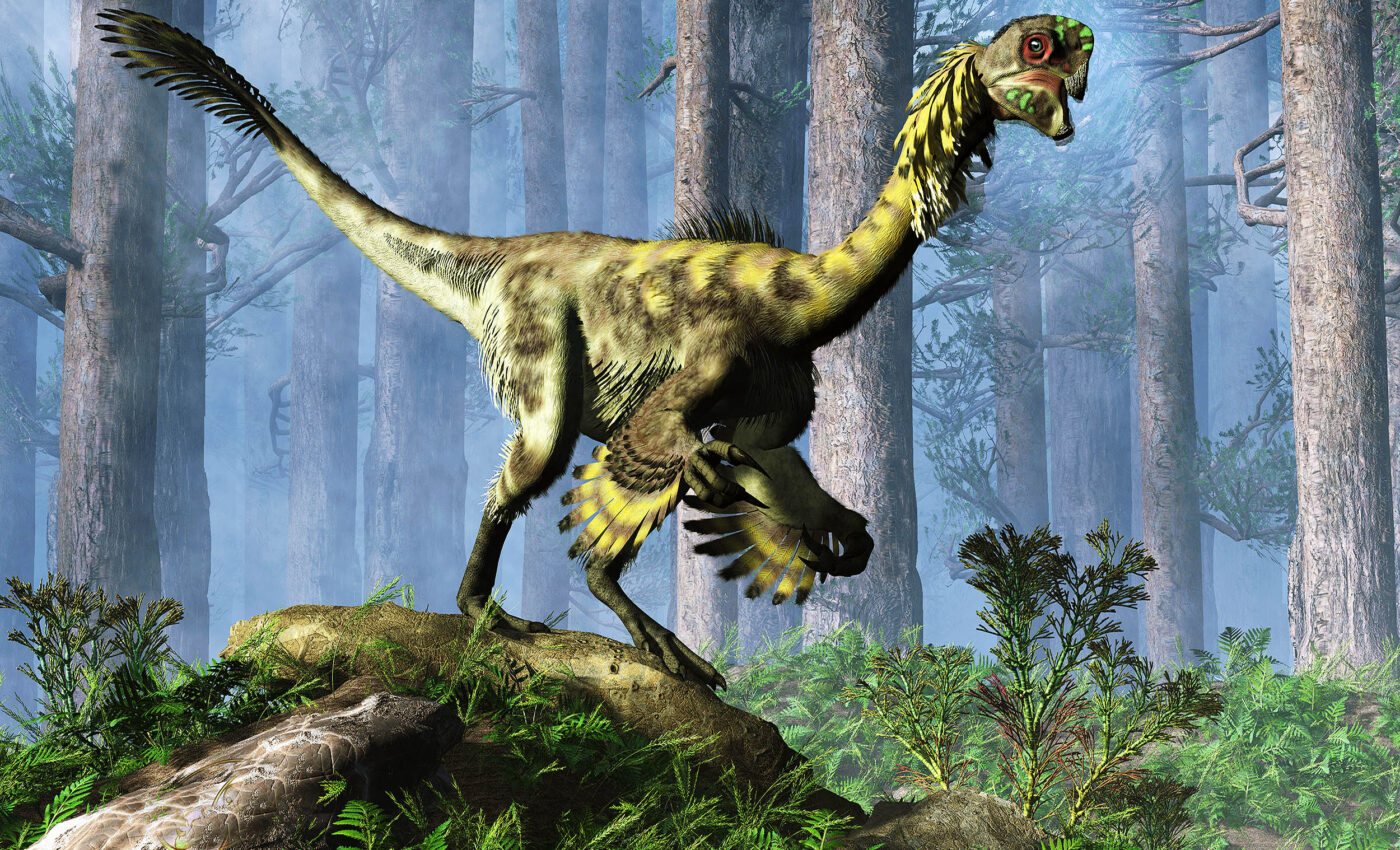
New Oviraptor dinosaur species weighed as much as a human female
Paleontologists have unveiled a new species of bird-like oviraptor dinosaur that roamed North America shortly before the catastrophic mass extinction event approximately 66 million years ago.
This event, believed to have been caused by a colossal asteroid impact, marked the end of the Cretaceous period and led to the extinction of most life forms, including all non-avian dinosaurs.
The newly identified species, an Oviraptor, likely boasted feathers and a beak and is believed to have lived around 125 million years ago.
Its existence came to light through the discovery of a leg bone within the Hell Creek formation — a region extensively studied for its rich deposits of Upper Cretaceous and some lower Paleocene rocks, spanning across four states in North America.
This significant finding was made possible by a team of researchers from Canada and the United States, who studied a limb of the dinosaur found in the northern United States.
Distinctive features of Oviraptors
Their analysis indicated that this creature, approximately the weight of an average woman, represents a species not previously recognized.
An artist’s rendition brings this feathered dinosaur to life, showcasing its sharp talons and bird-like anatomy, complete with a beak but devoid of teeth. It is depicted as having lived up to 130 million years ago.
Kyle Atkins-Weltman, a Ph.D. student at Oklahoma State University and author of the study, provided insights into their findings.
“We describe a relatively small caenagnathid hindlimb from the Hell Creek Formation, and conducted osteohistological analysis to assess its maturity,” he explained.
Rigorous study of an ancient dinosaur
The team’s meticulous examination of histological data and the morphological distinctions from Anzu wyliei and other caenagnathids led them to the conclusion that this specimen is a novel species of caenagnathid from Hell Creek.
Oviraptorosaurs, a diverse clade, varied significantly in size — ranging from the size of chickens or turkeys to species weighing over a ton.
Their cranial morphology suggests a diet that included both omnivorous and herbivorous members. While the earliest members of this group retained teeth, these were completely lost in the Late Cretaceous forms.
These dinosaurs possessed a complex, feathery integument, and studies of other specimens reveal their social nature, active brooding over nests, a reproductive strategy intermediate between crocodilians and modern birds, and an avian-like brain organization.
Significance of Eoneophron infernalis
The discovery of this new species, named Eoneophron infernalis, has significantly broadened our understanding of the types of dinosaurs that inhabited this region between 125 and 129 million years ago.
“In tandem with histological data indicating that this animal was of subadult or adult status at the time of its death, our research suggests that it represents a new taxon, Eoneophron infernalis,” said Mr. Atkins-Weltman.
This smaller caenagnathid from the Hell Creek Formation adds to the diversity and ecological understanding of caenagnathids in the end-Maastrichtian period.
In addition, the finding indicates that caenagnathid diversity in Laurasia remained largely stable through the Campanian-Maastrichtian.
These dinosaurs were successful components of Laurasian ecosystems until their extinction.
In summary, the discovery of Eoneophron infernalis serves as a window into our planet’s distant past, offering invaluable insights into the evolutionary history and diversity of life on Earth before a pivotal moment in its history.
More about Oviraptors
As discussed above, Oviraptors were a unique group of bird-like dinosaurs that lived during the Late Cretaceous period, approximately 75 to 71 million years ago.
These creatures, often misunderstood due to early fossil interpretations, have since revealed a fascinating story about their lifestyle and behaviors.
Named after “egg thieves”
When scientists first discovered Oviraptor fossils in the 1920s, they found them near a nest of eggs. Believing they were looking at egg thieves, they named these dinosaurs “Oviraptors,” which means “egg thieves.”
However, later discoveries turned this assumption on its head. The eggs near which the Oviraptors were found actually belonged to them, indicating that these dinosaurs were not thieves but caring parents, brooding over their nests.
Physical characteristics and diet
Physically, Oviraptors stood out with their distinct features. They had a parrot-like beak, devoid of teeth, and a crest on their head, the purpose of which remains a topic of debate among paleontologists.
Some suggest it might have been used in mating displays, similar to the crests found in modern birds.
Oviraptors were relatively small, about the size of a turkey, and they walked on two legs. Their diet was varied, possibly including plants, small animals, and perhaps eggs, making them omnivores.
Oviraptors resembled modern birds
One of the most striking aspects of Oviraptor biology is their feathers. Like many theropod dinosaurs, Oviraptors were covered in feathers.
This feature, along with other anatomical similarities, provides compelling evidence of the close evolutionary relationship between dinosaurs and modern birds.
In fact, these feathered dinosaurs offer crucial insights into understanding the origins of flight in birds.
Oviraptors lived in what is now Asia and North America, thriving in diverse environments. Their fossils, particularly well-preserved in places like Mongolia, have provided scientists with valuable information about their anatomy and ecology.
In summary, Oviraptors have emerged as a symbol of parental care in the dinosaur world. Their fossils challenge our understanding of dinosaur behavior, while contributing to the ever-evolving narrative of life on Earth millions of years ago.
The full study was published in the journal PLoS ONE.
—–
Like what you read? Subscribe to our newsletter for engaging articles, exclusive content, and the latest updates.
—–
Check us out on EarthSnap, a free app brought to you by Eric Ralls and Earth.com.
—–













